The waterfall on the Sangu
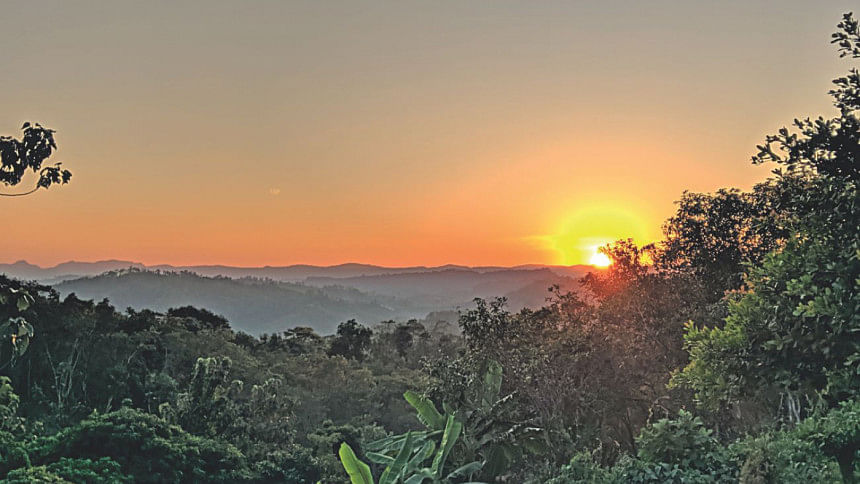
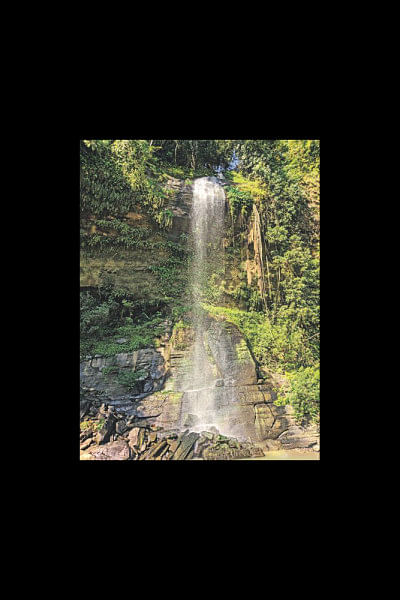
Winter leaves us too early every year, and is already bidding adieu this time too, but if you want to catch a touch of it still, head to the hills and valleys in the Chittagong Hill Tracts. The morning air is crisp, and fog engulfed until the sun shows up to dispel it, and every bit of shade is cool, as if holding winter captive in small enclosures. Of the hill tracts, Bandarban seems to me the remotest of them all, the greener too. The foliage feels denser to me, and the climbs and inclines more steep, the curves in the road more thrilling and enticing.
A somewhat well-known destination in Bandarban is the tiny bazar town of Ruma, named after the natural canal that flows not far off; it serves as the main connection to modern life for most people living in the hills.
The verdant wild hills of Bandarban have many small creeks, streams and waterfalls, some seasonal, others permanent, but the flow in these rivulets is almost always dependent on the rainfall. The face of these falls is completely different in monsoon, and many do disappear in the dry season, leaving barren dry rock exposed to the sun's harsh rays. Rijhuk, emptying into Sangu, one of the larger rivers of the Hill Tracts, is among the few permanent waterfalls, its serenity accessible to explorers all year round. As the years go by, remote regions become not so remote, and difficult areas get paved roads for access, and although once upon a time Rijhuk was only for the intrepid, it is now quite easy for all tourists, even beginners!
I had been in the area around Ruma before, with friends from university, in typical student fashion, cutting costs and sharing rides, and time. But as time was limited, we opted for Boga Lake instead, which is another place easily accessible from Ruma Bazar.
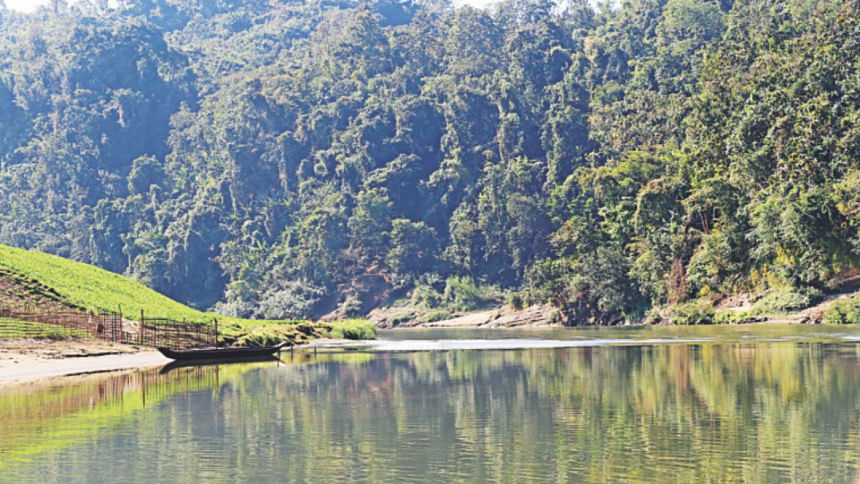
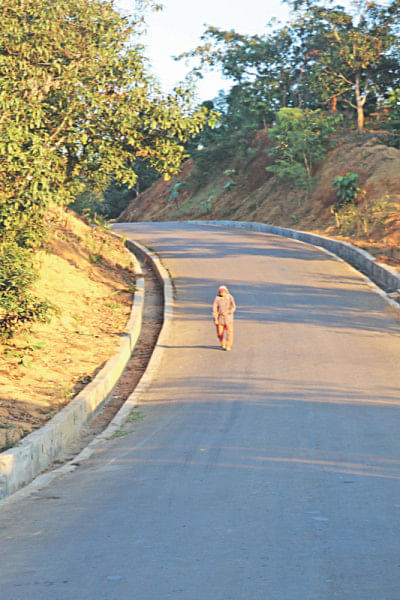
We stayed at Munlai Para, an eco-tourism initiative by Basecamp Bangladesh, and they organised a lovely ride on the rustic little narrow motorboat to take us over the Sangu, straight to Rijhuk, without any hassle. Generally, a similar boat can be rented from the Ruma Bazar ghats, and chartered to take travellers to and from the Rijhuk, and fares can vary from Tk 3,000-5,000, depending on the boat size and duration.
Everytime I visit Bandarban, one of the best parts of the journey is the not-so-comfortable ride by something called the Chand-er Gari. These are old Mahindra Boleros and Toyota Land Cruisers, butchered to attach extended passenger carriers. The one consolation for car appreciators is that these are probably too old, and also that they actually make life easier for many of the locals.
So, the really early morning ride on the Chand-er Gari while we made our way to Munlai was amazing, as we bounced and bumped on the roads, on the open back vehicle resembling a pickup truck, cutting through episodes of chilly mist in the hilly curves where the sun had not showed up yet. Every time the sun peeked out from behind the clouds, my stiff fingers would try to come back to life from being stuck on the guard rail that I had grabbed on while standing the nearly two-hour ride. After relaxing the first day at Munlai Para, snug in the cozy cottage, built on stilts to adjust for the hillside's steepness, and pigging out on the delicious lunch and dinner served at the central dining space, we scheduled the Rijhuk trip for early next day. Originally, I intended to walk the nearly two-hour trek, to the loud chagrin of my fellows, as we would have to wake up at 6AM the next day for that. But, the misty early morning, and the warm comforter, and some lethargy from the long day made the easier option of riding to the waterfall on a boat infinitely more appealing. As our group was small, we shared the boat with another family. The boat ride wasn't long, but the views on both banks of the peacefully flowing Sangu would have been worth it still. The fall itself is quite small, perhaps not spectacular in terms of size or water flow, but as the sun's rays hit the water stream, the mist created by it falling over rocks, created wonderful little rainbows all over the place. The best part? The pretty much absolute absence of noise! The overwhelming noise of the city, cars, or people, everything was quiet, except the faint murmur of the waterfall. We stayed our time, and its usually not advisable to stay too long as there are no proper washrooms or eating facilities right by the fall, just a small tea and biscuit shop. So we then headed back, my heart full of contentment from one more tick mark on my bucket list.
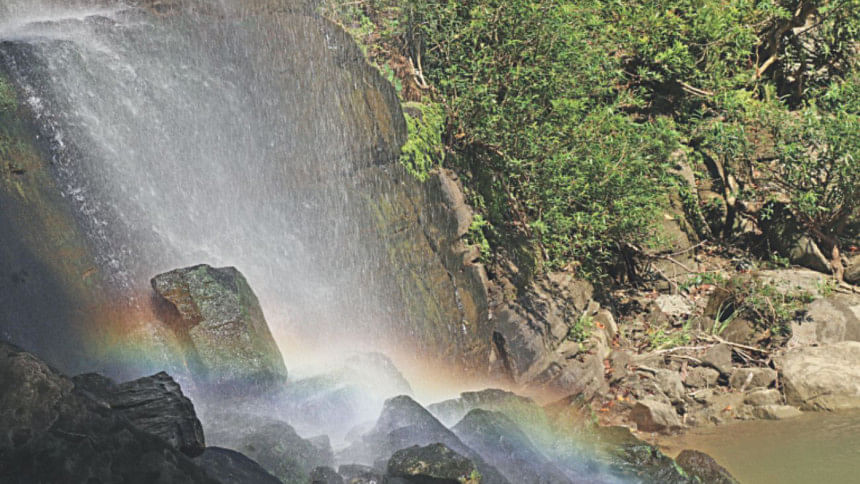
Photo: Sania Aiman

 For all latest news, follow The Daily Star's Google News channel.
For all latest news, follow The Daily Star's Google News channel. 



Comments